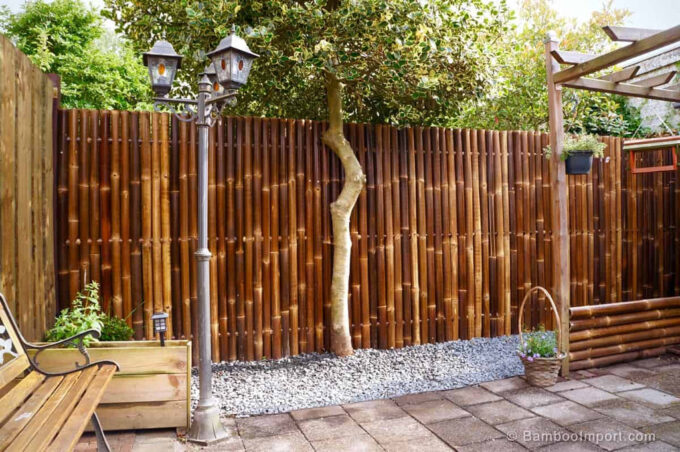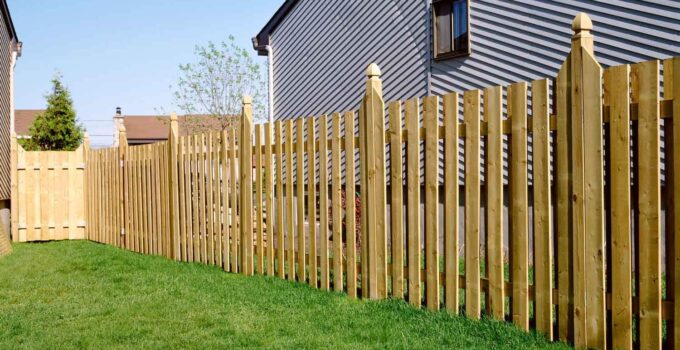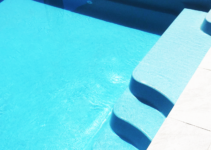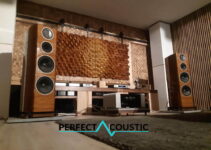Selecting the right wood for building a fence is more than just a practical decision; it’s an investment in the longevity and aesthetic of your property. The type of wood you choose directly impacts the durability, maintenance, and overall look of your fence.
This blog post aims to provide you with 10 essential tips to guide you through the nuances of choosing the perfect wood for your fencing needs. Whether you’re looking to add privacy, security, or simply enhance the beauty of your outdoor space, understanding these key factors will ensure your fence not only meets but exceeds your expectations.
1. Consider Your Climate

Source: dakotaunlimited.com
When it comes to wood fencing, one size does not fit all, especially concerning the climate. Different types of wood react differently to various weather conditions. For instance, cedar and redwood are excellent choices for humid and rainy climates due to their natural resistance to moisture and decay.
On the other hand, pine and spruce might be more suitable for drier climates. Understanding your local weather patterns is crucial in selecting a wood type that not only survives but thrives in your specific environment. This choice is critical to prevent premature wear and ensure your fence remains robust and visually appealing for years to come.
2. Durability Matters
Durability should be a top priority when choosing wood for a fence. Opting for a durable wood type not only ensures the longevity of the fence but also reduces future maintenance costs and effort. Hardwoods like oak and black locust are renowned for their strength and resilience, making them excellent choices for a fence that will withstand the test of time.
These woods are resistant to wear and tear, adverse weather conditions, and even physical impact, ensuring your fence remains sturdy and reliable. Investing in a durable wood type might come with a higher upfront cost, but the long-term savings in repairs and replacements make it a wise choice for any homeowner. In addition to hard wood you should also consider professionals such as AAA Fence and Deck Company Raleigh.
3. Budget-Friendly Options

Source: lnkedin.com
For those working within a budget, there are still plenty of wood options that offer both quality and affordability. Pressure-treated pine, for example, is a cost-effective choice that provides decent durability against rot and pests. Cedar, while slightly more expensive, is another great option that balances cost with performance.
It’s essential to explore various suppliers and compare prices to find the best deal. Remember, while the initial cost is an important consideration, it’s also crucial to factor in the long-term maintenance and lifespan of the wood to ensure you’re getting the best value for your money.
4. Maintenance Requirements
Different woods come with varying maintenance needs. Some, like cedar and redwood, require less upkeep due to their natural resistance to decay and pests. Others, like pine, might need more frequent treatments and inspections to maintain their condition. When choosing your wood, consider how much time and effort you’re willing to invest in maintenance.
If you prefer a low-maintenance option, go for woods that are naturally durable or have been treated to resist environmental factors. However, if you’re okay with a bit of upkeep for a more budget-friendly option, then woods like pine might be suitable for you.
5. Rot and Decay Resistance

Source: ocregister.com
In environments prone to moisture and insects, choosing a wood with natural rot and decay resistance is vital. Woods like cedar, redwood, and teak are excellent choices due to their inherent oils and tannins that repel water and pests, thus prolonging their lifespan. These woods offer peace of mind, especially in humid or rainy climates, reducing the likelihood of rot and structural damage. While they might be pricier than other options, their durability and lower maintenance needs make them a cost-effective choice in the long run.
6. Insect Resistance
Insect infestation can severely compromise the integrity and appearance of your fence. Woods like cedar and cypress are known for their natural insect-repellent properties, making them ideal choices for areas prone to termites and other wood-boring insects.
These woods contain natural oils and chemicals that deter pests, keeping your fence safe and intact for years. Investing in insect-resistant wood might cost more upfront, but it saves money on pest control and repairs in the future, making it a smart decision for those in bug-heavy regions.
7. Appearance and Aesthetics
The appearance of your fence significantly influences the overall aesthetic of your property. Woods like cedar, with its rich, warm tones, and redwood, known for its deep red hues, add a touch of elegance and charm to any outdoor space. Pine, when stained or painted, can also offer a beautiful and customizable appearance.
Consider the architectural style of your home and your personal taste when choosing your wood, as the fence will play a major role in defining your property’s character and curb appeal.
8. Sustainability and Eco-Friendly Options

Source: bambooimport.com
In today’s environmentally conscious world, choosing sustainable, eco-friendly wood for your fence is not just a personal preference but a responsibility. Woods like bamboo and reclaimed wood are excellent choices for those looking to make an environmentally responsible decision.
Bamboo, a rapidly renewable resource, offers durability and a unique aesthetic, while reclaimed wood provides a rustic, character-rich option that reduces waste. Opting for sustainable wood not only contributes to environmental conservation but also adds a story and character to your fencing project.
9. Local Availability
Using locally available wood for your fence has several benefits. It supports local businesses and reduces the carbon footprint associated with transporting materials over long distances. Woods like pine or cedar are often readily available in many regions and can be a more cost-effective choice due to reduced shipping costs.
Additionally, local woods are likely well-suited to your region’s climate and environmental conditions, ensuring better performance and longevity. Consult with local suppliers to explore your options and choose a wood that is both practical and beneficial for your community.
10. Compatibility with Stain or Paint

Source: renopaintmart.com
The ability of wood to accept stain or paint can greatly affect its appearance and longevity. Woods like pine and spruce are excellent canvases for paint and stains, allowing you to customize the look of your fence to match your home’s aesthetic. On the other hand, woods like cedar and redwood have natural beauty that many prefer to leave unstained.
When choosing your wood, consider how you plan to finish it and select a type that is compatible with your desired look and the level of protection you want to provide against the elements.
Conclusion
Choosing the right wood for your fence involves considering various factors such as climate, durability, budget, maintenance, and aesthetics. Whether you opt for a classic, durable wood like cedar or a more budget-friendly option like pressure-treated pine, your choice will impact the fence’s performance and appearance.
Remember to consider sustainability and local availability to make an environmentally responsible choice. With these 10 tips, you’re well-equipped to make an informed decision that suits your needs, tastes, and values. Your fence is not just a boundary; it’s a statement about your home, and selecting the right wood ensures it will remain a source of pride and functionality for years to come.







